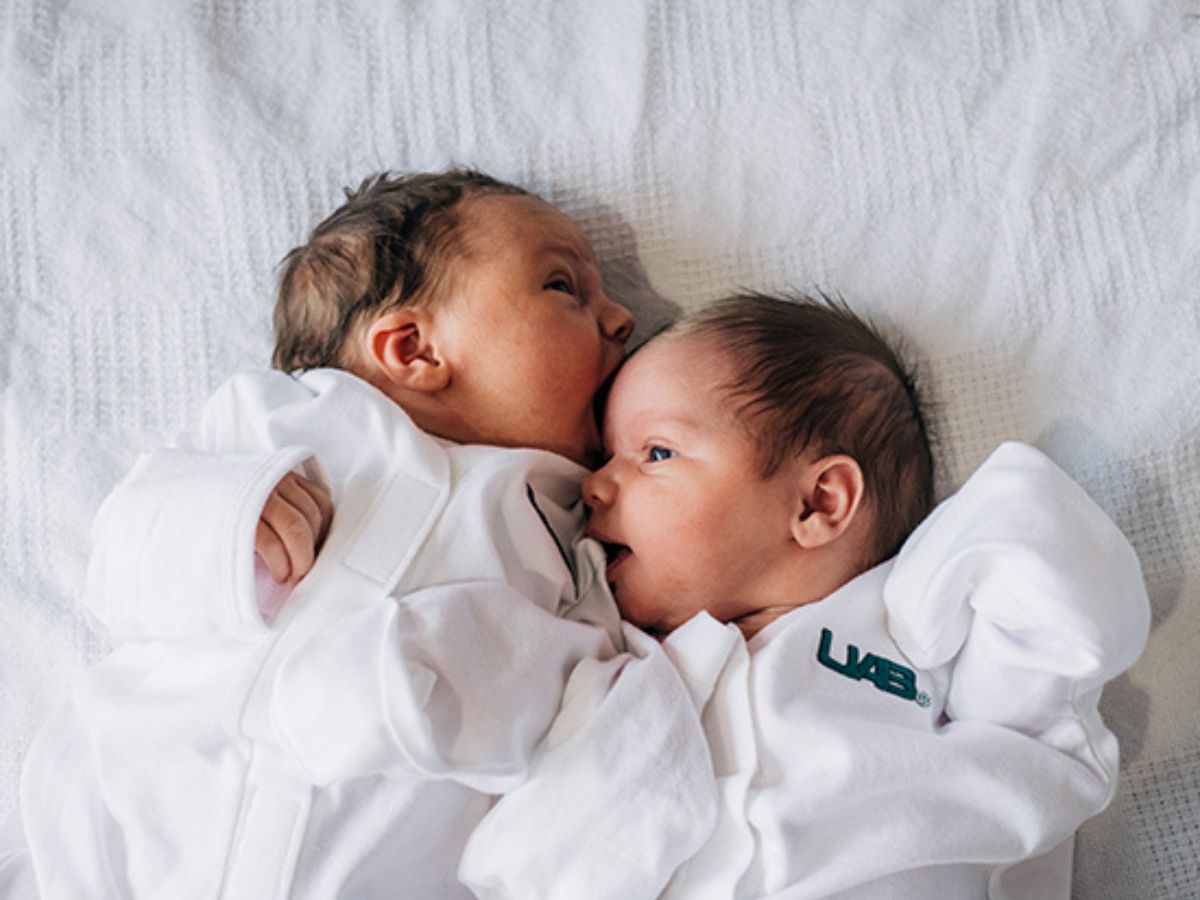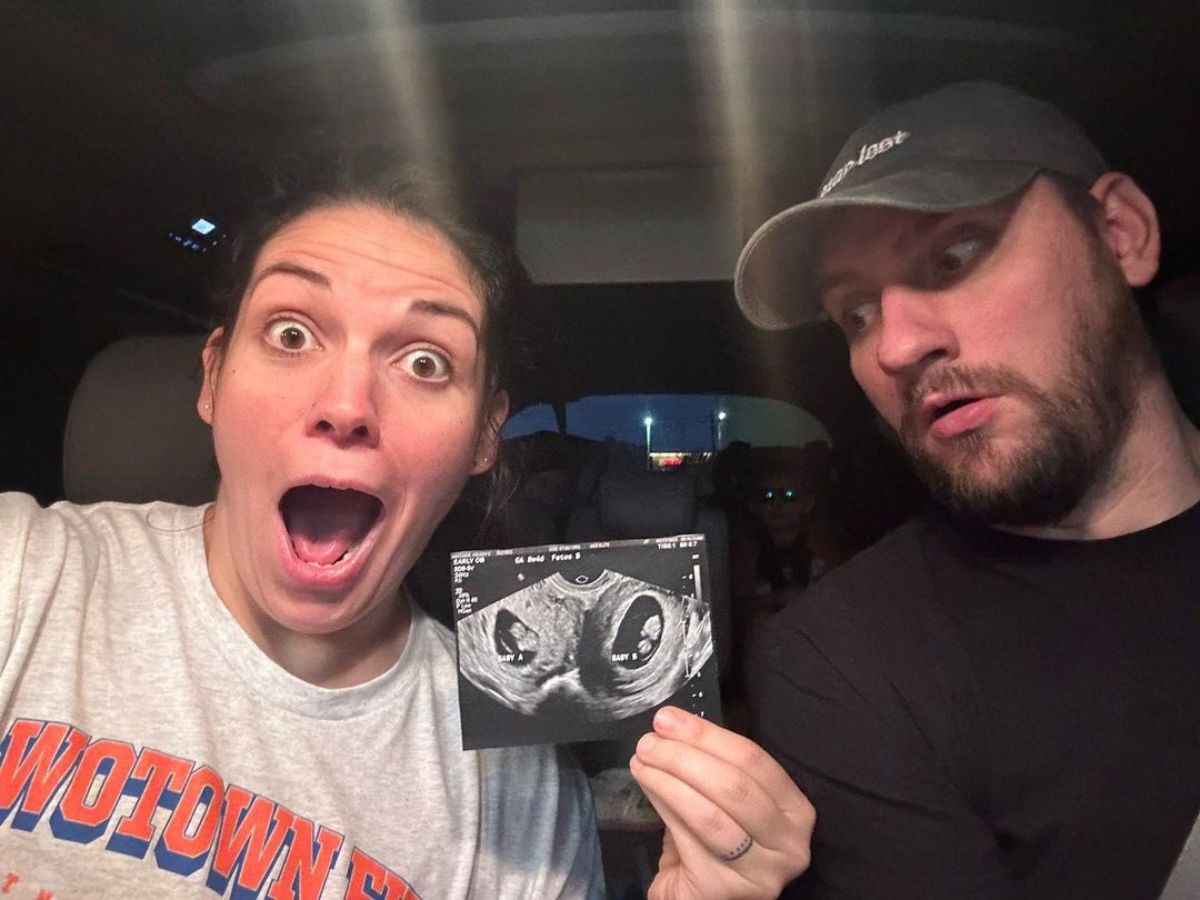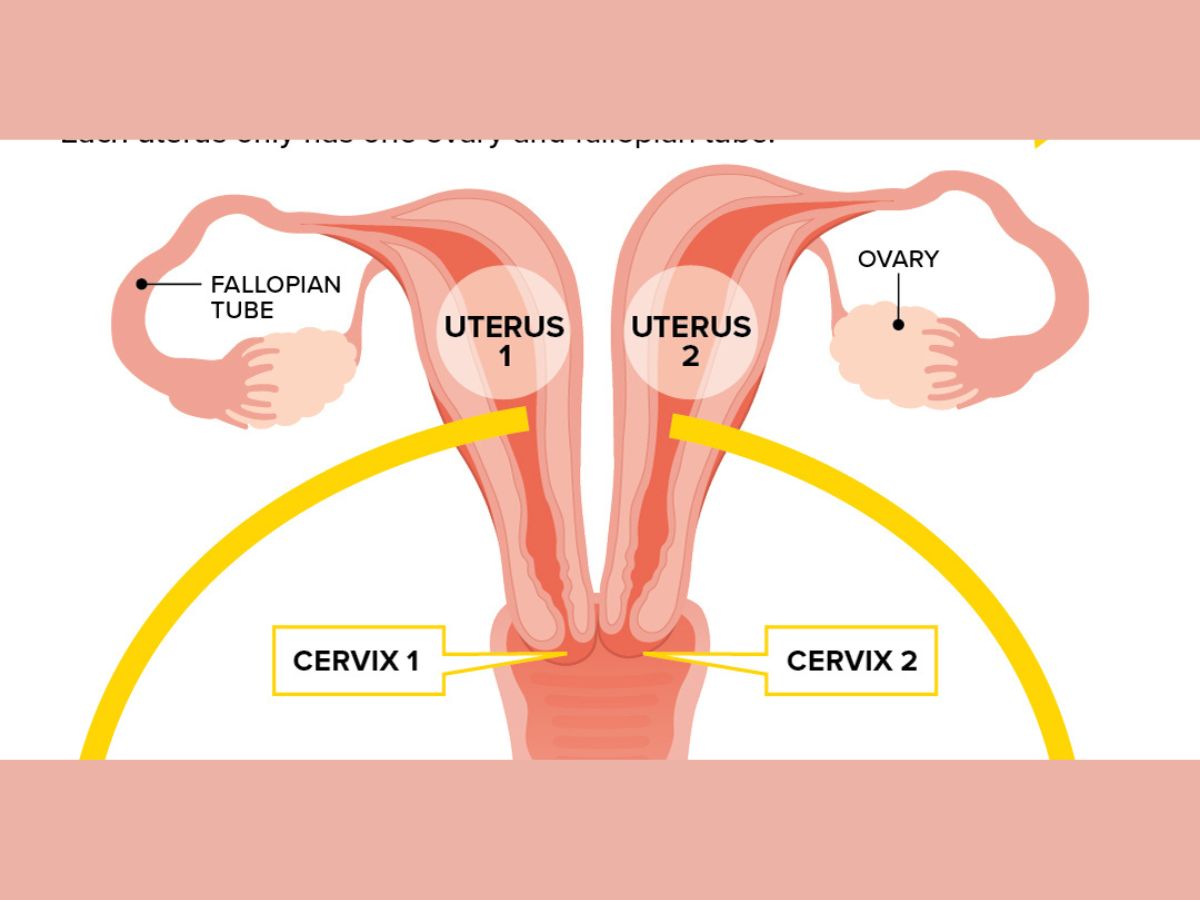Alabama Mother With Rare Double Uterus Delivers Two Girls In Two Days. Know What Causes This
[ad_1]
An Alabama woman recently gave birth to two “miracle babies” in two days. Kelsey Hatcher gave birth to Roxi Layla on December 19, and Rebel Laken on December 20, at the University of Alabama at Birmingham Hospital. This was a case of a one-in-a-million pregnancy, and the reason why she could deliver two girls in two days is that she has two uteri or womb, a rare condition called uterine didelphys. Since Hatcher has a rare double uterus, she was pregnant with a baby on each side.
Also, the twins will have two different birthdays as they were born on different days.
“Our miracle babies were born! They decided they were rare enough statistically that they should just go ahead and have their own birthdays too,” Hatcher wrote in an Instagram post on December 23.

Hatcher had a dicavitary pregnancy
On May 23, 2023, Hatcher and her husband found out that they were having twins. She wrote in an Instagram post that since she was 17, she has known that she has a didelphic uterus. Not only does a woman with this condition have two uteri, but also two cervixes.
Hatcher wrote that several anomalies could be associated with a didelphic uterus, but in her case, an ovary is attached to each uterus.
Hatcher had always been told that if she ever conceived, she would probably have preterm labours or miscarriage. However, she already had three babies before giving birth to the miracle twins. She delivered her previous babies in full term. In each of her earlier pregnancies, she had just one baby in one uterus.

The fact that during her fourth pregnancy, she had a baby in each uterus means that she is likely to have ovulated from both ovaries at the same time, and both eggs were fertilised at the same time.
According to a statement released by the University of Alabama at Birmingham Hospital, Kelsey noticed some bleeding a few weeks into her fourth pregnancy, and since women with a double uterus are at a higher risk of miscarriage, she decided to undergo an ultrasound. The ultrasound showed that her baby was doing well, but she asked the hospital to conduct an ultrasound of her second uterus too. That was when they found that she was pregnant with a baby in her second uterus too.
Such a pregnancy is known as dicavitary pregnancy.
In the statement, Dr Richard O Davis, a professor at the University of Alabama at Birmingham Hospital, and who co-managed Hatcher’s pregnancy, said that in a typical twin pregnancy, the twins share one womb, which can limit the amount of space each has, making preterm or early birth a high possibility, but in Hatcher’s latest pregnancy, each baby had her own womb, sac, placenta, and umbilical cord. This allowed the babies extra space to grow and develop.
ALSO READ | NASA Features Orange Tabby Cat In First Video Sent From Deep Space To Earth Via Laser. WATCH
How Hatcher gave birth to the miracle twin girls
Since dicavitary twins are rare, there are not many case studies. Hatcher’s doctors knew that there were three potential delivery scenarios: both babies delivered vaginally; one baby delivered vaginally, and the other through C-section; and both babies delivered through C-section.
Hatcher had given birth to her three previous babies vaginally.
According to the University of Alabama at Birmingham Hospital, the ideal scenario would have been for Hatcher to go into labour on her own, but spontaneous labour did not occur, and hence, she was induced to the hospital at 39 weeks.
The hospital dilated Hatcher four centimetres on her right cervix and three centimetres on her left. Her right uterus was progressing further than the left, and the baby’s head was lower, because of which the hospital team decided to focus on the baby on the right.
After the first baby, Roxi, was delivered vaginally on December 19, Hatcher was labouring in the left uterus while simultaneously undergoing the postpartum process in the right. She experienced contractions with the second baby while breastfeeding the first baby.
The hospital team continued with an induction on the left side, but the second baby was not descending as anticipated. About 10 hours after Roxi was born, the second girl, named Rebel, was delivered through C-section, on December 20.
Thus, one of the dicavitary twins was born vaginally, while the other was born through C-section.
Though they were born on two different days, and grew in two different wombs, the babies have been classified as twins as the eggs were released and fertilised during the same ovulation cycle.
According to Davis, the babies are fraternal twins, which are born as a result of the fertilisation of two separate eggs with two different sperm during the same pregnancy. Such babies are also known as dizygotic twins.

What causes uterine didelphys?
Uterine didelphys is a rare congenital anomaly that occurs in 0.3 per cent of women when the Mullerian ducts fail to fuse together during foetal development and subsequently form two uterine cavities, also known as horns. The Mullerian duct is an embryonic structure that develops into the female reproductive tract, which includes the fallopian tube, uterus, cervix, and upper vagina.
According to Mayo Clinic, genetics may play a role in causing this condition.

During a typical uterus development, Mullerian ducts fuse to form the uterus, but when they do not, each uterus has one ovary and one fallopian tube.
Women with uterine didelphys may have a double vagina when a thin wall of tissue runs down the length of the vagina, dividing it into two.
Each baby has their own womb, sac, placenta, and umbilical cord.
Challenges associated with uterine didelphys
Some of the complications associated with uterine didelphys include miscarriage, kidney problems, infertility, and premature birth.
According to the US National Institutes of Health (NIH), the chance of having a pregnancy in one of the pairs along with prolapse, or a fall from the normal position in the body, in the other, is very low in a didelphic uterus. Only one such case has been reported so far.
Labour and delivery are challenging for a woman with uterine didelphys because each uterus could start contracting and dilating at different times and rates.
There are documented cases of dicavitary pregnancies in which both babies were delivered vaginally, one of the babies was delivered vaginally and the other through C-section, and both babies delivered through C-section.
MUST READ | Scientists Analyse Pelt Of ‘Mutton’, The Only Known Woolly Dog Fleece. Study Unravels New Mysteries
How can uterine didelphys be diagnosed?
The condition may be diagnosed during a routine pelvic examination. Uterine didelphys can be confirmed through an ultrasound; magnetic resonance imaging (MRI); sonohysterogram, a special type of ultrasound scan in which fluid is injected through a tube into the uterus so that the fluid outlines the shape of the uterus on the ultrasound scan; and hysterosalpingography, during which a special dye is injected into the uterus through the cervix, so that X-rays can be taken while the dye moves through the reproductive organs, and the shape and size of the uterus can be observed.
In what cases does a woman with uterine didelphys require treatment?
A woman with uterine didelphys may not know that she has the condition, but if she experiences symptoms such as unusual pressure or cramping pain before or during a menstrual period, an abnormally high amount of bleeding during a menstrual period, has repeated miscarriages or preterm labour, she may need treatment, according to the Nationwide Children’s Hospital.
If a woman shows no symptoms or other problems, uterine didelphys does not require any treatment.
However, if the uterus is partially divided, or a woman has experienced pregnancy loss with no other medical explanation, she may undergo a surgery to join the double uterus.
Check out below Health Tools-
Calculate Your Body Mass Index ( BMI )
[ad_2]
Source link